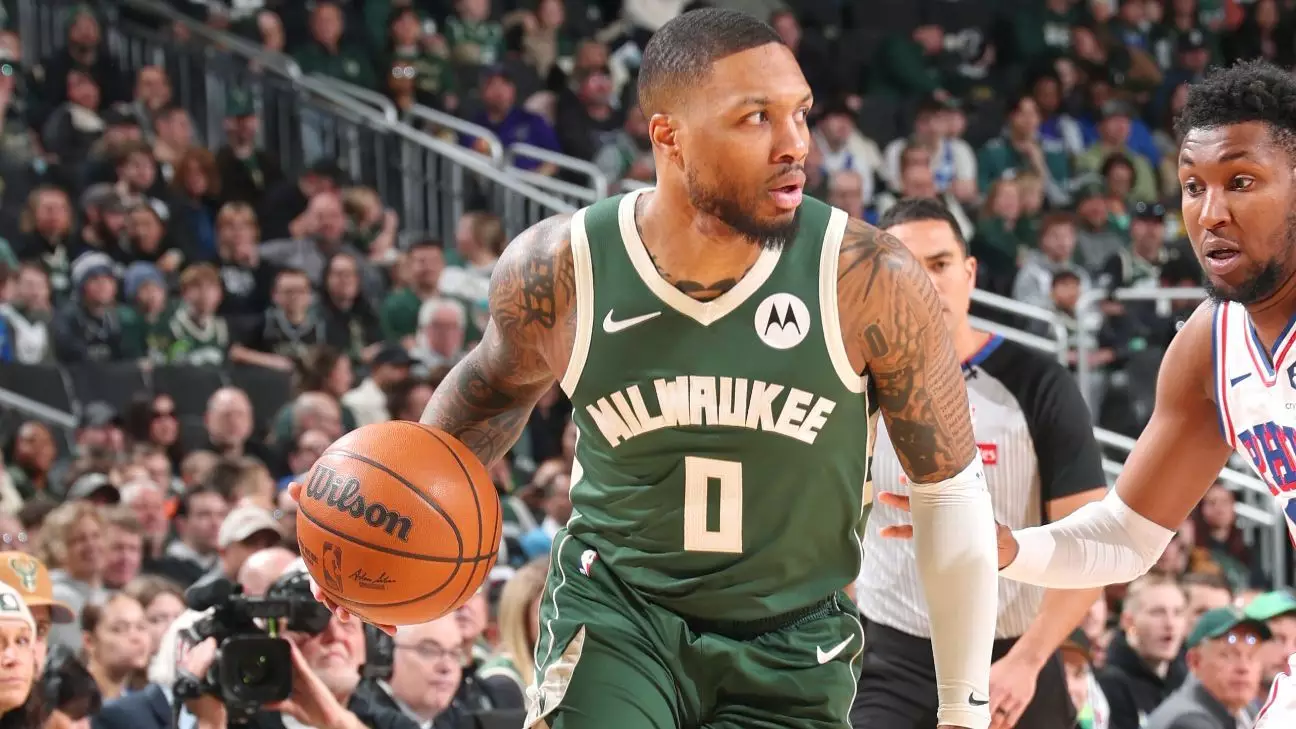The Milwaukee Bucks are confronted with a challenging situation as they head into the NBA playoffs without their star guard, Damian Lillard. Diagnosed with a blood clot in his right calf, Lillard’s absence underscores the unpredictable nature of professional sports, where one moment an athlete is performing at their peak, and the next, health issues threaten their career. The news of his condition, first announced in March, left fans and teammates anxious about the team’s prospects in the playoffs, scheduled to kick off this Saturday against the Indiana Pacers.
The serious nature of deep vein thrombosis (DVT) cannot be understated. While medical reports from sources indicate that the clot is shrinking and that Lillard is experiencing “significant improvement,” the road to recovery remains uncertain. Lillard’s situation is a stark reminder of the fragility of athletic careers, especially as players aged 30 and above face increased risks for health complications.
Team Resilience and the Road Ahead
Despite Lillard’s absence, the Bucks have displayed an impressive degree of resilience. The team’s ability to secure a 10-4 record in the final stretch of the regular season—culminating in an eight-game winning streak—reflects their depth and adaptability. It also illustrates how players can rise to the occasion in the face of adversity, stepping up when key contributors are sidelined. Coach Doc Rivers mentioned his cautious optimism regarding Lillard’s return, but with a sobering acknowledgment of the need to prepare for life without him.
Maintaining a balanced team dynamic is crucial. With Lillard out of the lineup, other players must shoulder greater responsibility, both offensively and defensively. The challenge for the Bucks is not only to adapt their gameplay but to cultivate a winning mentality, ensuring that the absence of a superstar does not diminish their competitive edge.
The Playoff Imperative: Health Over Haste
Leading up to the playoffs, the focus should extend beyond just winning games; the Bucks must prioritize Lillard’s long-term health. General manager Jon Horst emphasized the necessity of following strict medical protocols and indicated that the franchise will continue to support Lillard through his recovery process. This commitment underscores an essential philosophy in sports: a player’s health is paramount. Rushing Lillard back onto the court could risk exacerbating an already precarious situation.
Lillard, who averaged an impressive 24.9 points and 7.1 assists per game before his injury, is a linchpin in the Bucks’ offensive strategy. His return could elevate the team’s performance exponentially, but the organization must tread carefully. Entering the playoffs without him is a hurdle, yet it also provides an opportunity for younger players to gain valuable experience against formidable opponents.
Eyes on the Future
As the playoffs approach, the narrative surrounding the Bucks pivots significantly based on Lillard’s health and readiness to return. While fans remain hopeful for a swift recovery, the focus should be on the Bucks’ overall performance as a unit, rather than becoming overly reliant on one player’s return. The playoffs can serve as a proving ground for the team, shaping their identity and fortifying their resolve as they navigate the challenges ahead.
Whatever the outcome, the overarching story of the Milwaukee Bucks is one of resilience and adaptation in the face of adversity. Whether Lillard’s recovery can be accelerated remains uncertain, but what is clear is that this moment will define not just the playoffs, but the ethos of the team moving forward.


Leave a Reply